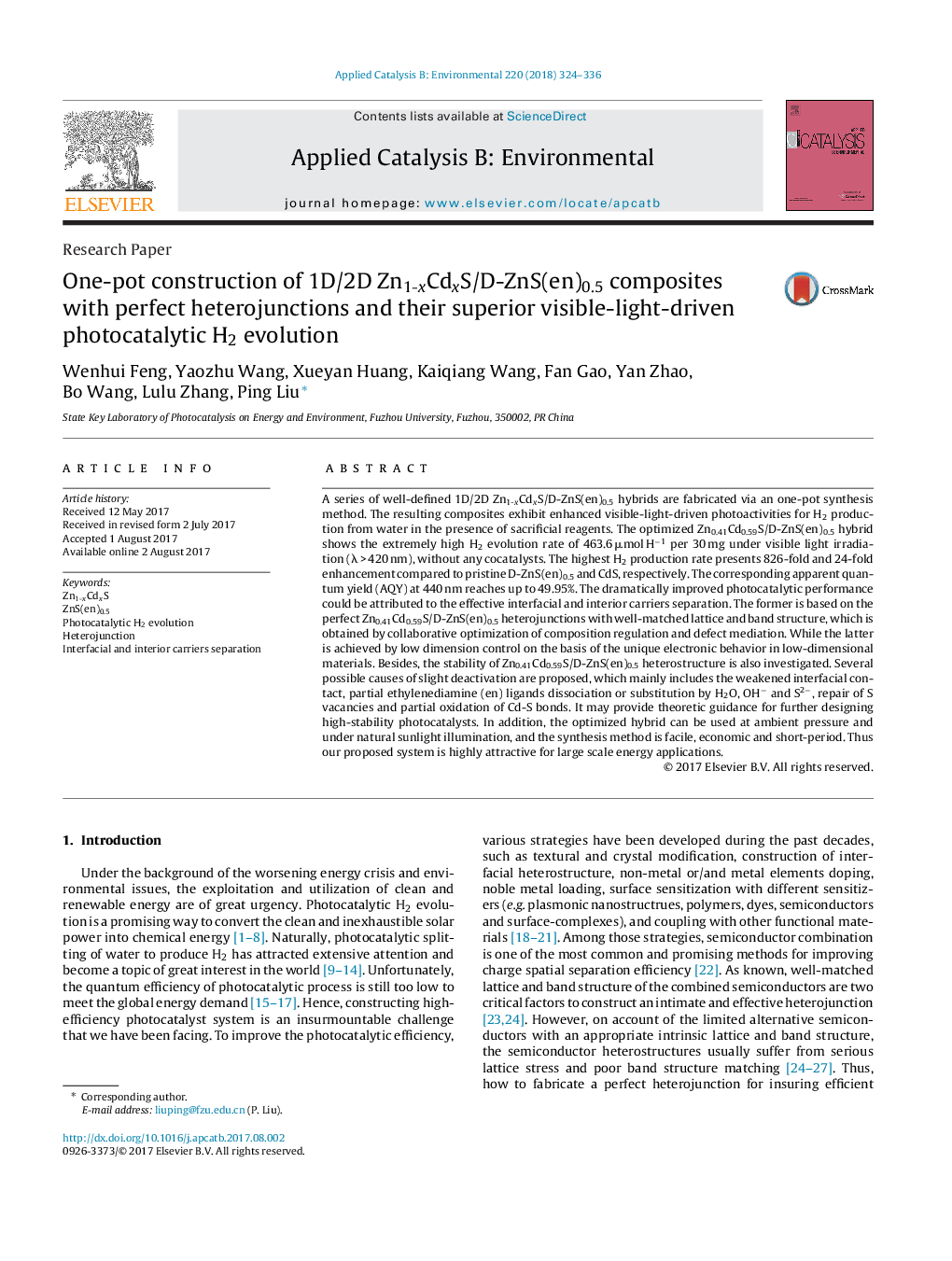| Article ID | Journal | Published Year | Pages | File Type |
|---|---|---|---|---|
| 6453607 | Applied Catalysis B: Environmental | 2018 | 13 Pages |
â¢1D/2D Zn1-xCdxS/D-ZnS(en)0.5 hybrids are constructed by a facile one-pot solvethermal method.â¢Perfect heterojunction is achieved by co-optimization of dimension, composition and defect.â¢The optimized C-Z-0.24 shows superior photoactivity with AQY of 49.95% at 440 nm.â¢The photostability of Zn0.41Cd0.59S/D-ZnS(en)0.5 is also investigated.
A series of well-defined 1D/2D Zn1-xCdxS/D-ZnS(en)0.5 hybrids are fabricated via an one-pot synthesis method. The resulting composites exhibit enhanced visible-light-driven photoactivities for H2 production from water in the presence of sacrificial reagents. The optimized Zn0.41Cd0.59S/D-ZnS(en)0.5 hybrid shows the extremely high H2 evolution rate of 463.6 μmol Hâ1 per 30 mg under visible light irradiation (λ > 420 nm), without any cocatalysts. The highest H2 production rate presents 826-fold and 24-fold enhancement compared to pristine D-ZnS(en)0.5 and CdS, respectively. The corresponding apparent quantum yield (AQY) at 440 nm reaches up to 49.95%. The dramatically improved photocatalytic performance could be attributed to the effective interfacial and interior carriers separation. The former is based on the perfect Zn0.41Cd0.59S/D-ZnS(en)0.5 heterojunctions with well-matched lattice and band structure, which is obtained by collaborative optimization of composition regulation and defect mediation. While the latter is achieved by low dimension control on the basis of the unique electronic behavior in low-dimensional materials. Besides, the stability of Zn0.41Cd0.59S/D-ZnS(en)0.5 heterostructure is also investigated. Several possible causes of slight deactivation are proposed, which mainly includes the weakened interfacial contact, partial ethylenediamine (en) ligands dissociation or substitution by H2O, OHâ and S2â, repair of S vacancies and partial oxidation of Cd-S bonds. It may provide theoretic guidance for further designing high-stability photocatalysts. In addition, the optimized hybrid can be used at ambient pressure and under natural sunlight illumination, and the synthesis method is facile, economic and short-period. Thus our proposed system is highly attractive for large scale energy applications.
Graphical abstractDownload high-res image (173KB)Download full-size image
